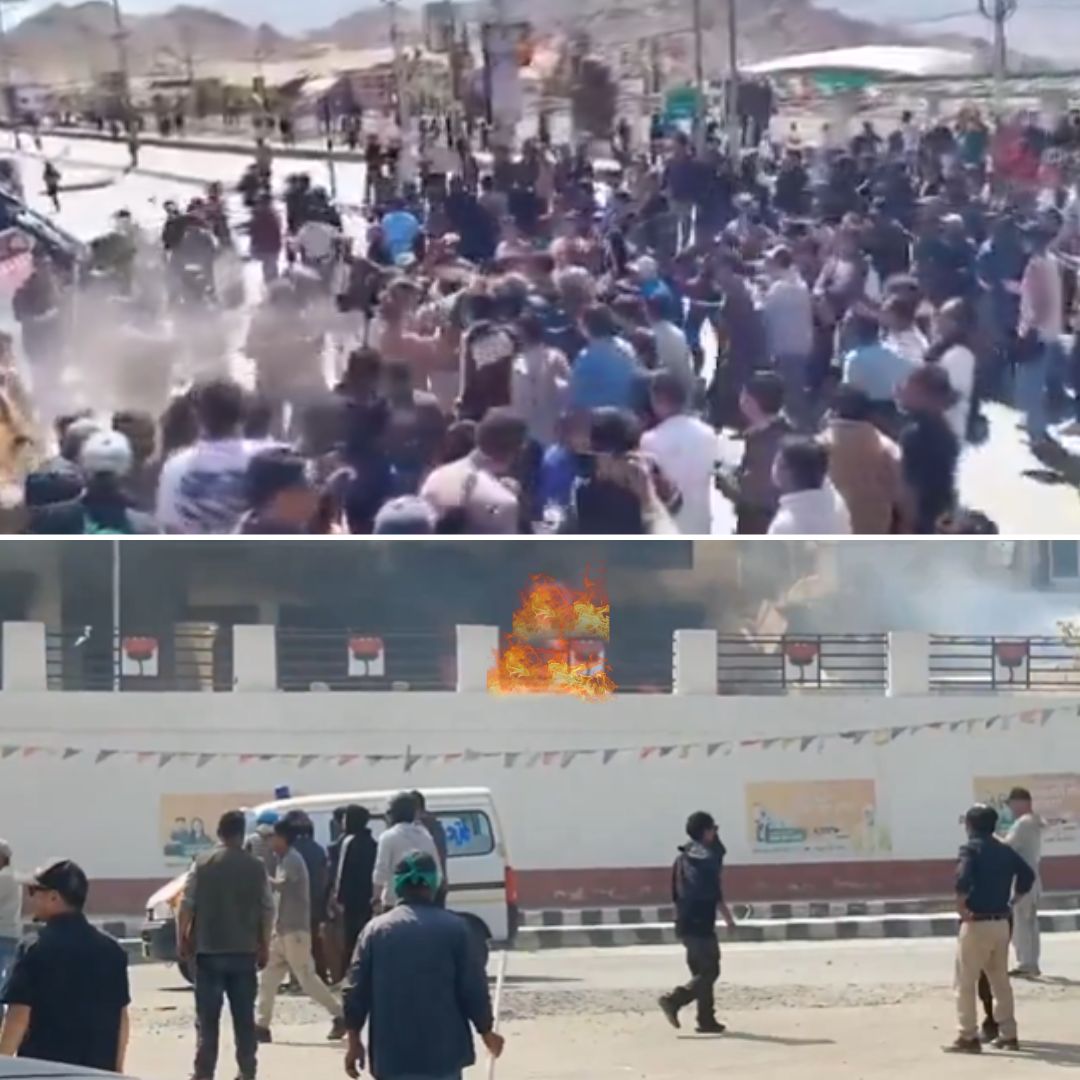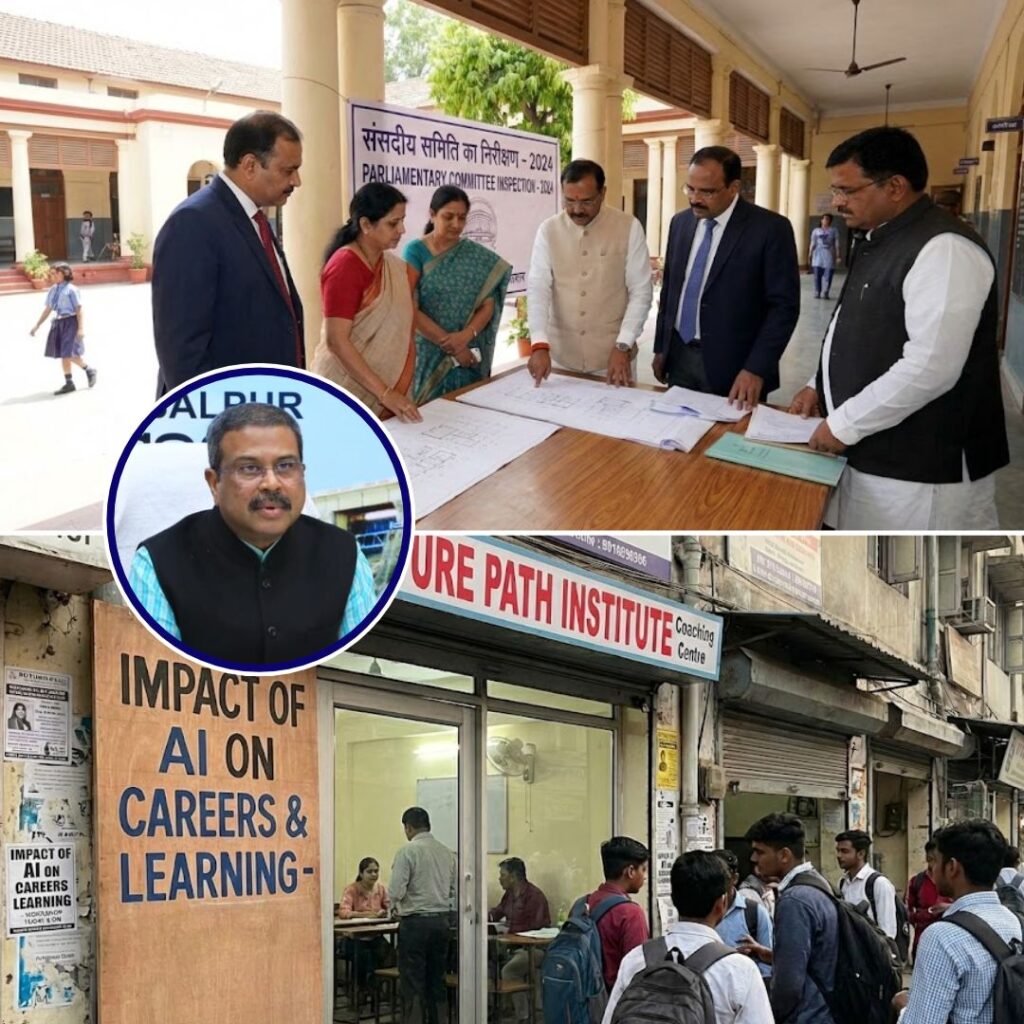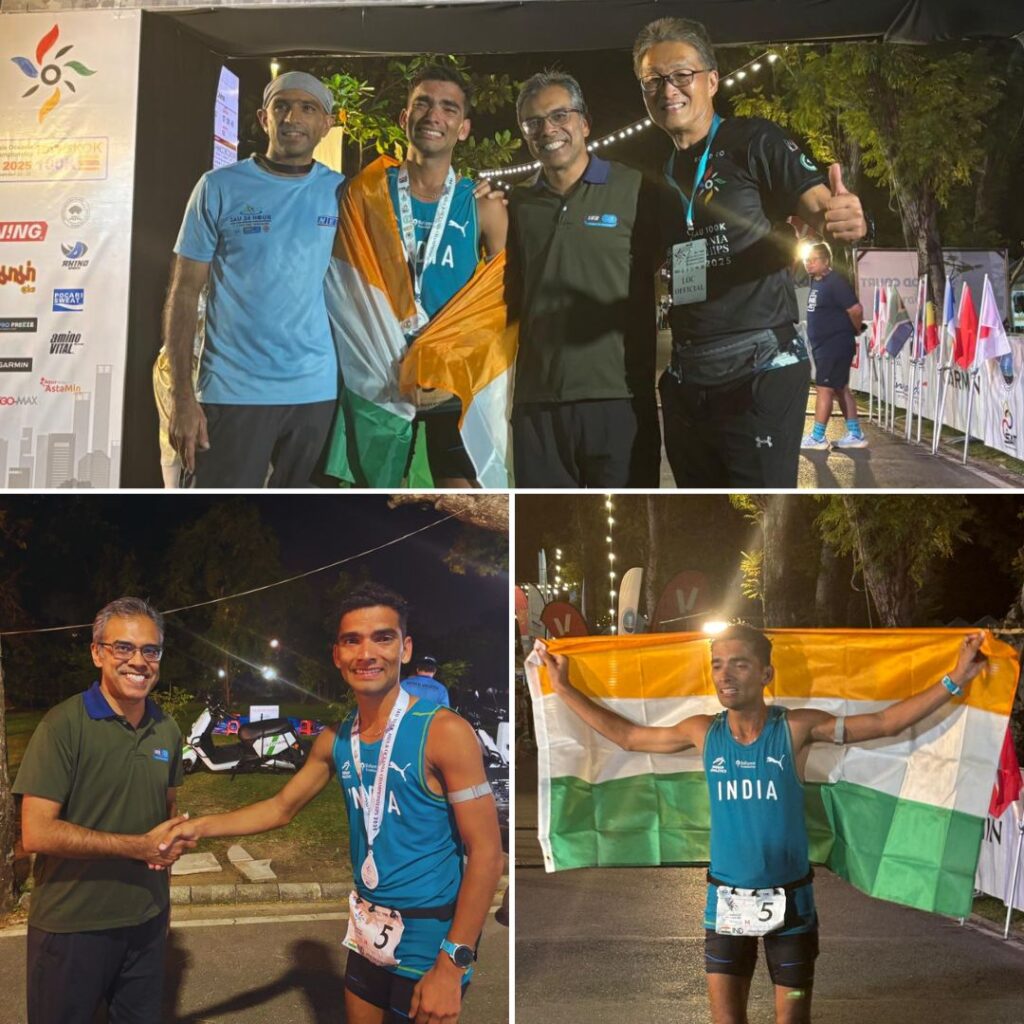Violent protests demanding statehood and constitutional protections shook Leh, Ladakh on Wednesday, resulting in at least four deaths and more than 80 injuries, including over 40 police personnel. The agitation, led by the youth wing of the Leh Apex Body (LAB), escalated after two hunger strikers collapsed and were hospitalised, drawing crowds and triggering a shutdown call.
Authorities responded to rampant arson and vandalism, including the torching of the BJP headquarters, district offices, and vehicles, by imposing a strict curfew under Section 163 of the Bharatiya Nagrik Suraksha Sanhita, 2023, and banning gatherings of more than five people in Leh.
Requesting protestors to not bu₹n down BJP offices in #Ladakh
— Tarun Gautam (@TARUNspeakss) September 24, 2025
It took them a lot of hard earned Electoral bond extortion money to build those offices. #LadakhProtest
pic.twitter.com/xgv4CPPbX6
Chaos Erupts on Leh’s Streets
Witnesses described how angry youths surged from Martyrs’ Ground, torching government property and clashing with police in running battles. As security forces attempted to disperse crowds with tear gas and batons, the confrontation escalated; police resorted to firing after their vehicles were set ablaze and officers were attacked. At least 50 people were arrested as per media reports.
The violence raged for several hours until the situation was brought under control by late afternoon, leaving families devastated and the city under lockdown. Officials confirmed that several protesters lost limbs, making this the most lethal unrest in Ladakh since the region was granted Union Territory status. Senior political leaders and government officials described the day as “one of the darkest moments in Ladakh’s recent history.”
Movement Pushed to the Brink
The flashpoint arose after hunger strikers, part of a 35-day fast led by climate activist Sonam Wangchuk, were rushed to hospital on Tuesday. Wangchuk, who ended his protest after violence erupted, issued impassioned appeals for peace.
“My message of a peaceful path failed today. I appeal to youth to please stop this nonsense. This only damages our cause,” Wangchuk posted on social media. Protest organisers emphasised four main demands: full statehood, inclusion under the Sixth Schedule, separate Lok Sabha seats for Leh and Kargil, and job reservations.
Disturbing scenes from Ladakh bordering China. Ladakh Autonomous Hill Dev Council office, BJP office, CRPF, Police Vehicles torched. Several injured. Talk of political link to riots. Activist Wangchuk draws "Gen Z" link.
— Rahul Shivshankar (@RShivshankar) September 24, 2025
SPARK OF ANARCHY THE FIRST HYDROGEN BOMB? pic.twitter.com/YXb7MafuqI
The Sixth Schedule guarantees legislative and financial autonomy for tribal majorities, a status activists fear Ladakh desperately needs to protect its environment, land, and cultural identity. The Union home ministry blamed “politically motivated individuals” and “provocative statements” for stoking the unrest, urging calm while reaffirming a commitment to Ladakh’s constitutional aspirations.
Uncertainty and the Road Ahead
Wednesday’s violence follows months of stalled government talks with the LAB, Kargil Democratic Alliance, and other local groups. Despite recent government concessions, such as dramatically increased reservations for Scheduled Tribes and women, along with official status for local languages, protesters believe their core demands remain unmet.
Authorities have announced a fresh round of dialogue scheduled for 6 October, expressing hope for resolution through peaceful engagement. For now, however, Leh remains under strict curfew, its streets eerily silent except for police patrols and haunted by the aftermath of loss and destruction. Many in Ladakh now wonder how far their movement must go before real change arrives.
Government Response to Ladakh Protests
The Government of India stated it has been actively engaged in dialogue with Ladakh’s representatives, achieving significant progress by increasing Scheduled Tribe reservations from 45% to 84% and recognising local languages.
However, it blamed activist Sonam Wangchuk for inciting the mob through provocative statements during his hunger strike, which led to the violence on September 24, including attacks on BJP and government offices and injuries to over 30 security personnel.
The government affirmed its commitment to Ladakh’s constitutional safeguards and urged against circulating provocative videos. Further talks are scheduled for early October.

The Logical Indian’s Perspective
Such tragic events are a solemn wake-up call for thoughtful, empathetic governance rooted in respect for diversity and local autonomy. While violence must never be celebrated, the aspirations of Ladakh’s youth deserve genuine attention. Government and civil society share a responsibility to nurture dialogue, build trust, and ensure the valuable sacrifices made turn into peaceful progress, not further division.











